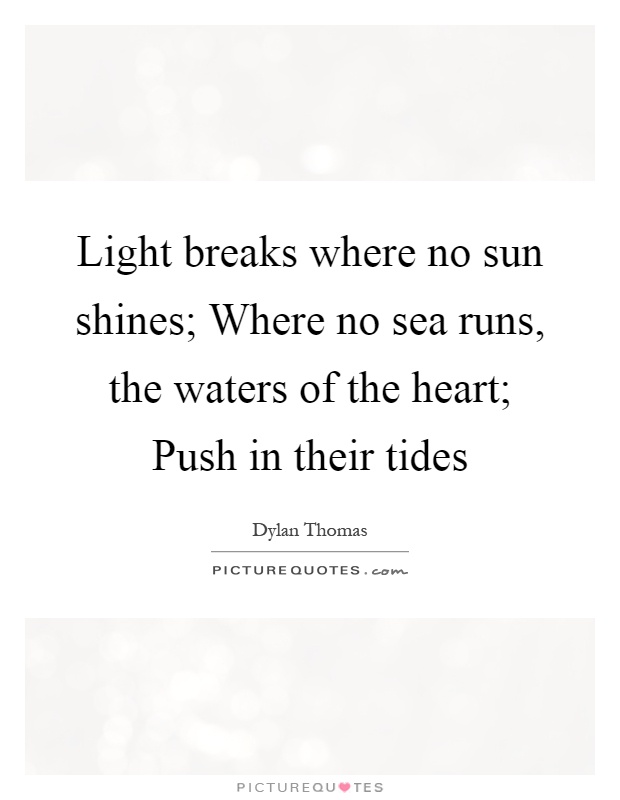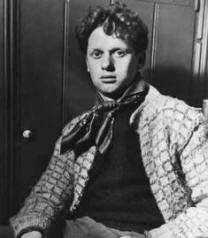The poem throws light upon the kind of treatment meted out to the differently-abled people. The deep soul-wreathing cry of the lonely ones is portrayed through the imaginations. Thus, the poem is a wonderful reflection of the pathos of a loner.
The Hunchback in the Park: About the Poet
Dylan Marlais Thomas (27 October 1914 – 9 November 1953) was a Welsh poet and writer whose works include the poems “Do not go gentle into that good night” and “And death shall have no dominion”; the ‘play for voices Under Milk Wood, and stories and radio broadcasts such as A Child’s Christmas in Wales and Portrait of the Artist as a Young Dog. He became widely popular in his lifetime and remained so after his premature death at the age of 39 in New York City. By then, he had acquired a reputation, which he had encouraged, as a “roistering, drunken and doomed poet.”
He was born in Swansea, Wales, in 1914. An undistinguished pupil, he left school at 16 and became a journalist for a short time. Many of his works appeared in print while he was still a teenager; however, the publication in 1934 of “Light breaks where no sun shines” caught the attention of the literary world. His first published efforts brought Thomas critical praise and honors, including the 1934 Poet’s Corner Prize. 18 Poems drew heavily from the notebooks of collected poems that Thomas wrote as a youth, and it would set off a string of notebook-inspired works such as Twenty Five Poems (1936), The Map of Love (1939), and Deaths and Entrances (1946). Also notable of this period was that it marked the beginning of the poet’s lifelong struggle with alcohol abuse.
After a long drinking bout at Manhattan’s White Horse Tavern, Thomas collapsed at the Chelsea Hotel. He died in a New York City hospital, on November 9, 1953, at the age of 39.
The Hunchback in the Park: Setting
The poem is set in a suburban town or city in which the hunchback lives. The city has parks, a zoo, and a river. The hunchback remains at the park from early in the morning till night.
The Hunchback in the Park: Summary
“The hunchback in the park
A solitary mister
Propped between trees and water
From the opening of the garden lock
That lets the trees and water enter
Until the Sundaysombere bell at dark.”
The first stanza introduces the protagonist of the poem, which is the hunchback. The poet refers to him as the solitary mister. So we get to know that the hunchback lives in solitude. He’s lonely any rules about in the parks.
“Eating bread from a newspaper
Drinking water from the chained cup
That the children filled with gravel
In the fountain basin where I sailed my ship
Slept at night in a dog kennel
But nobody chained him up.”
In the second stanza, the poet paints the picture of the protagonist, some Prisoner, as he is eating the bread from a newspaper or drinking water from a change cup. That also says that the children fill his cup with gravel, which means the children torment him.
“Like the park birds he came early
Like the water he sat down
And Mister they called Hey mister
The truant boys from the town
Running when he had heard them clearly
On out of sound.”
In the third stanza, the poet talks about the activities of the hunchback as he comes early and sits down in the park. The true and boys tease him. They call him hey, mister, and then tease him. As soon as the boys see have heard them, they run away.
“Past lake and rockery
Laughing when he shook his paper
Hunchbacked in mockery
Through the loud zoo of the willow groves
Dodging the park keeper
With his stick that picked up leaves.”
In the fourth stanza, the poet continues to describe the activities of the hunchback and the mockery he has to face not only from the children but also from the park keeper he has to dodge. Whatever he does, he is mocked. Thus we see that the hunchback is tormented where ever he goes, even by adults.
“And the old dog sleeper
Alone between nurses and swans
While the boys among willows
Made the tigers jump out of their eyes
To roar on the rockery stones
And the groves were blue with sailors.”
Here the poet refers to the hunchback as the old dog sleeper, which may be a nickname given to him. Now the hunchback has found asylum amongst the swans. This shows that even though the hunchback is deformed as a man and is seen down upon by other men, he is a beautiful creature like any other, whether it be plants or swans. The boys who mock the hunchback are compared to being tigers whose predatory nature against the hunchback is to torment and tease him. Nature doesn’t mock him.
“Made all day until bell time
A woman figure without fault
Straight as a young elm
Straight and tall from his crooked bones
That she might stand in the night
After the locks and chains.”
Here the poet talks about the creative or imaginative nature of the hunchback. The hunchback is short of an artist who sat down at the park and created with his imagination a woman who was without any fault she was straight. This here is an irony as the protagonist is himself crooked and has a hunchback, but he creates a beautiful and straight and tall woman. The woman stays at night even after the park is closed.
“All night in the unmade park
After the railings and shrubberies
The birds the grass the trees the lake
And the wild boys innocent as strawberries
Had followed the hunchback
To his kennel in the dark.”
Women created by the hunchback remain with them even at night when the park is locked. The hunchback continues his longing. The poet shows the contrast in the daily life of the hunchback by comparing the day’s beauty with the park’s shrubs, trees, lakes, et cetera while comparing the day’s torments to the wild boys.
The Hunchback in the Park: Analysis
The poem “The hunchback in the Park” is written by Dylan Thomas. The entire poem is about a hunchback who is tormented and teased by people, both adult and young. He is secluded from society and lives in solitude. The poet correctly calls him solitary mister. The poem is filled with partial rhyme such as water/enter, lock/ dark. This increases the readability of the poem. The poet also uses a lot of imagery. While comparing the hunchback’s day with the park’s beauty and his torments with the wild boys, the poet uses a lot of imagery.
Even in the beginning, he uses imagery like the chained cup filled with gravel, propped between trees and water like the water he sat down, willow groves, et cetera. The poem can be seen as autobiographical in which the poet himself, as a young boy, might have teased a person similar to the protagonist. Now that the poet himself is an artist, he understands the torment he has inflicted. The poem can be seen as the young version, or rather the child version of the poet mocking is an adult version. As an artist, the poet now understands the power of imagination, which can Transcend all reality in the poem when the hunchback imagines and creates a perfect woman figure who does not mock him and stays with him at night.
The Hunchback in the Park: Tone
The poem is sad throughout. It contains only 3 full sentences in total. It has 7 paragraphs, each of which is of the same length. From the beginning, the torments faced by the hunchback are pointed out. He is shown as a solitary person who is mocked by society. Even though the poem is highly organized, it gives a disjointed feeling due to the long sentences. The tone remains narrative. The poet describes the daily activities of the hunchback, but it remains a sad narrative because the poem showcases the torments inflicted by society on the protagonist. Towards the end of the poem, we feel sad for the protagonist as he has to imagine a woman to make you feel good. We are also shown the imaginative prowess of the hunchback. Overall this poem has a narrative sad tone as it describes the unfairness of society.
To the Hunchback in the Park: Theme
The poem’s central theme is to showcase the biased and unfair attitude of society on physically deformed people or rather people who are a bit different from the rest. It also shows how much pain we as individuals inflict on such differently-abled people. The hunchback is the protagonist in the poem and is tormented by society by adults and children. Another theme that the poem brings out is the power of imagination which transcends all of reality. This is shown by the hunchback imagination of a straight and tall woman even though she has crooked bones. This woman is perfect without any flaws and remains with him at night.
One of the best poems of Dylan Thomas; this stands supreme as I express a soulful cry of the hunchback one. The imaginative power reflects how wonderfully the poet can beautify the qualities of the lonely hunchback.
Some online learning platforms provide certifications, while others are designed to simply grow your skills in your personal and professional life. Including Masterclass and Coursera, here are our recommendations for the best online learning platforms you can sign up for today.
The 7 Best Online Learning Platforms of 2022
- Best Overall: Coursera
- Best for Niche Topics: Udemy
- Best for Creative Fields: Skillshare
- Best for Celebrity Lessons: MasterClass
- Best for STEM: EdX
- Best for Career Building: Udacity
- Best for Data Learning: Pluralsight










